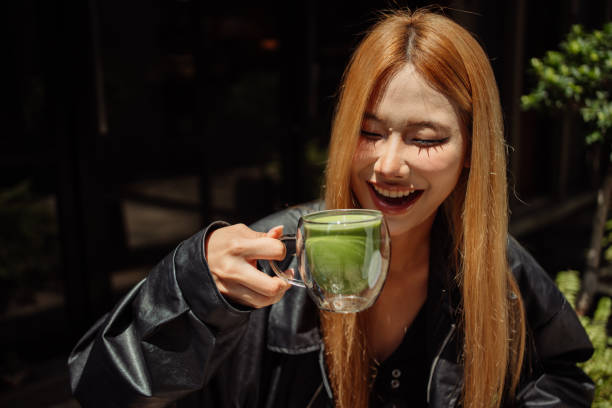Matcha has taken the world by storm. From Instagram-worthy lattes to traditional Japanese tea ceremonies, this bright green powder has become a cultural and culinary icon. But for anyone unfamiliar with matcha, one question often comes up before that first sip: what does matcha taste like? Is it sweet or bitter? Creamy or grassy? The answer is a bit more nuanced than you might expect.
In this guide, we’ll explore the flavors of matcha in detail, considering the factors that influence its taste and how it’s experienced in different forms. Whether you’re a first-timer or a curious foodie, you’ll get a clear sense of what to expect from this unique tea.
The Basic Flavor Profile of Matcha
To put it simply, matcha tastes earthy, vegetal, and slightly bitter, with a hint of natural sweetness and a rich, creamy finish—especially when prepared correctly.
But that’s just scratching the surface. Matcha has a complex flavor profile that combines multiple sensory notes. Here’s how it breaks down:
- Umami – One of the most defining characteristics of high-quality matcha is its umami, a savory taste that adds depth and richness. It’s often described as “brothy” or “full-bodied.”
- Vegetal/Grassy – Matcha is made from shade-grown green tea leaves, which gives it a distinctive grassy or spinach-like flavor. This “green” taste is more pronounced in ceremonial-grade matcha.
- Bitterness – Depending on the quality, matcha can range from mildly bitter to noticeably sharp. Culinary-grade matcha is generally more sour than ceremonial-grade matcha.
- Sweetness – While matcha isn’t sweet like sugar, top-tier matcha has a natural sweetness that balances out the grassy and bitter notes.
- Creaminess – When whisked well, matcha develops a smooth, velvety texture that enhances its flavor and mouthfeel. This is especially noticeable in lattes or traditional usucha (thin tea) preparation.
Factors That Affect the Taste of Matcha
To fully answer the question what does matcha taste like, it’s important to understand the factors that influence its flavor. Matcha isn’t a one-flavor-fits-all kind of tea; it varies widely depending on its origin, processing, and preparation.
1. Grade of Matcha
Matcha is typically divided into two main categories:
- Ceremonial Grade: Made from the youngest tea leaves, this grade has a colourful green shade and a touchy, clean taste. It’s less bitter and more umami-forward, making it ideal for drinking on its own with just hot water.
- Culinary Grade: This grade is utilized for cooking and mixing into drinks. It’s more robust and slightly more bitter, which helps it stand out in recipes with sugar or dairy.
High-quality ceremonial matcha will taste noticeably smoother and less astringent than a lower-quality culinary option.
2. Origin and Growing Conditions
Matcha grown in Japan—especially in regions like Uji, Nishio, or Shizuoka—is often considered superior in flavor. The unique climate and soil composition in these areas contribute to the tea’s richness and complexity.
Additionally, shade-developing the tea plants before harvest boosts their chlorophyll and amino acid content material, especially L-theanine, which enhances sweetness and umami.
3. Freshness and Storage
Matcha is sensitive to light, heat, and air. When stored improperly, it can become stale, dull, and overly bitter. Fresh matcha will have a bright green color and a vibrant taste, while old matcha may turn yellowish and taste flat or harsh.
4. Preparation Method
How matcha is prepared plays a huge role in its final taste. Whisking it with water that’s too hot (over 175°F or 80°C) can burn the tea and bring out unpleasant bitterness. The correct preparation method will highlight the sweet, umami-rich notes and smooth texture.
How Matcha Tastes in Different Forms
Matcha’s flavor profile changes depending on how it’s used. Here’s how it typically tastes in various popular forms:
1. Traditional Matcha Tea (Usucha or Koicha)
- Usucha (“thin tea”) is light, frothy, and slightly grassy with mild bitterness and a touch of sweetness.
- Koicha (“thick tea”) is made with more powder and less water, resulting in a bold, intense flavor with deep umami and minimal bitterness.
2. Matcha Latte
When mixed with milk (dairy or plant-based), matcha becomes creamier and mellower. The milk softens the bitterness and enhances its natural sweetness, making it a popular introduction for newcomers.
3. Matcha in Food
In desserts or baked goods, matcha offers a subtle earthy note that balances sweetness beautifully. Think matcha ice cream, mochi, cookies, or cakes—it adds color and a unique, herbaceous complexity.
What Does Matcha Taste Like to First-Timers?
For those new to matcha, the flavor can be surprising. It doesn’t taste like typical green tea bags or herbal infusions. The grassy notes, slight bitterness, and creamy umami can be an acquired taste.
Some people describe their first impression of matcha as tasting “like grass” or “like spinach,” while others immediately appreciate its smooth and deep flavor. Much depends on the grade of matcha and how it’s prepared. Starting with a high-quality latte or dessert is often a good way to warm up to the flavor.
Final Thoughts: Acquired Taste or Instant Love?
So, what does matcha taste like? The answer is: rich, earthy, slightly bitter, and full of character. It’s a drink that reveals more layers the more you try it.
Like wine or dark chocolate, matcha can be an acquired taste—but once appreciated, it becomes a go-to for many tea lovers around the world. Whether you enjoy it traditionally, in a latte, or baked into your favorite treat, matcha offers a distinctive and rewarding flavor experience worth exploring.





